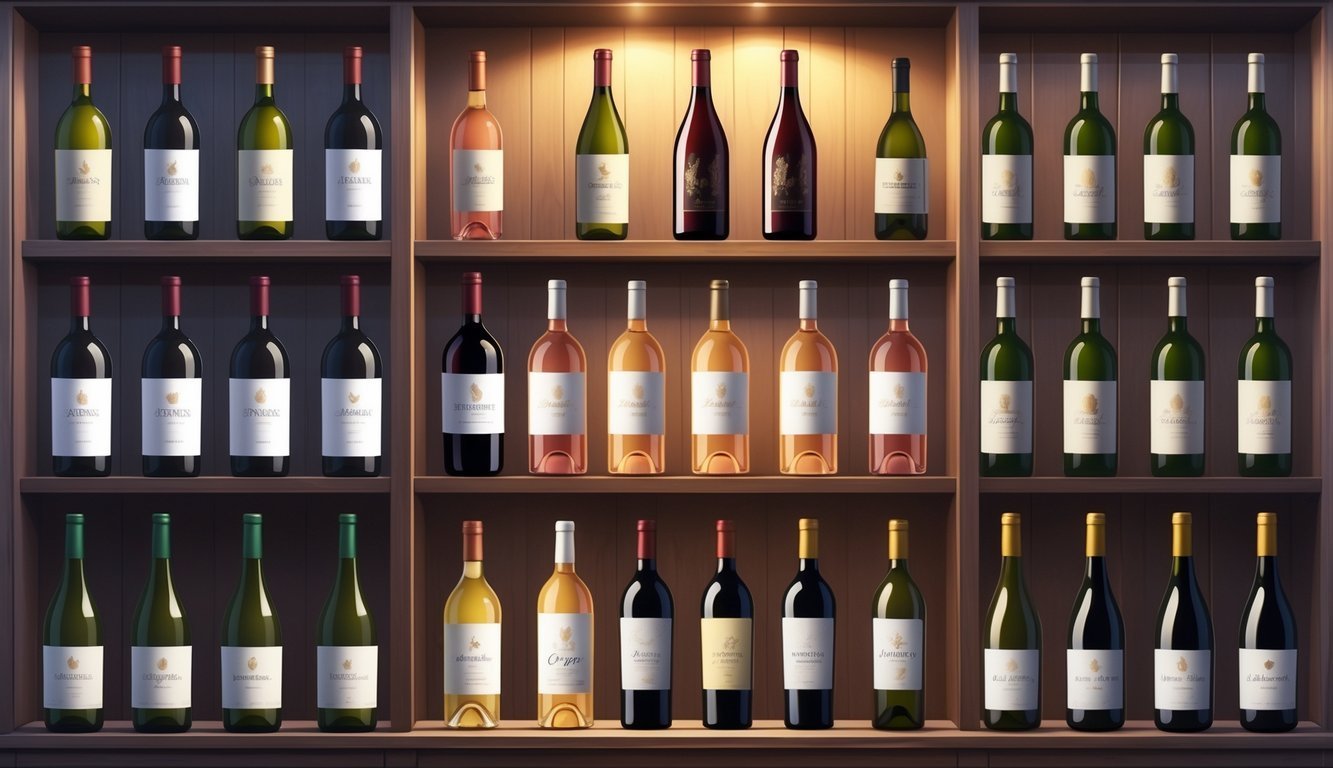PsychNewsDaily Publishers
100 Summit Drive
Burlington, MA, 01803
Telephone: (320) 349-2484
PsychNewsDaily Publishers
100 Summit Drive
Burlington, MA, 01803
Telephone: (320) 349-2484
Day drinking can be discreet with the right wine choices, favoring low-alcohol varieties with mild flavors while avoiding bold, aromatic options that attract attention.

Day drinking can be a fun way to relax, but let’s be honest—sometimes you just want to keep it under the radar. Picking the right wine makes it a lot easier to blend in.
Wines with lower alcohol and mild flavors help you hide your day drinking habit.
Some wines really stand out, though, thanks to their strong flavors or higher alcohol—definitely not ideal if you’re trying to keep things discreet. Avoiding those can make your sipping a breeze.
This guide covers which wines make day drinking easy to hide and which ones you might want to skip. Whether you’re into something soft and light or bold and rich, you’ll find some clear winners for sneaky sipping.

You’ll want wines that are easy to drink and don’t scream “look at me!” in a crowd. Go for options that fit in with everyday moments and don’t have overpowering aromas or flavors.
These wines usually mix smooth taste with lower alcohol and gentle scents. They just feel right for casual sipping.
White wines with low acidity and fresh flavors are a safe bet. Pinot Grigio or a mellow Chardonnay work well—they’re clean, light, and easy to sip slowly.
Dry whites from Bordeaux also offer subtle fruit notes without too much tang. They won’t leave strong smells on your breath or hang around on your palate, so you can enjoy a glass without anyone catching on.
For reds, look for low-acidity wines with softer tannins. Merlot and Gamay both bring gentle plum and berry flavors, and they don’t have that harsh bite some reds do.
These reds won’t stain your teeth much or leave a strong scent behind. Less sharpness means you can sip casually and not worry about puckering up. They’re great to keep around for undetectable day drinking.
Surprisingly, some champagnes and sparkling wines can help you hide your habit. If you pick a Brut style with a dry, crisp finish, you get less sweetness and a sharper feel that masks alcohol smells.
The bubbles help blend flavors fast, so the alcohol doesn’t jump out. You’ll taste hints of citrus or green apple, but nothing too bold. These sparkling wines are a clever way to blend in at parties or brunch.

Some wines make it way too obvious if you’re drinking during the day. They have strong smells, lingering flavors, or just stand out because of their richness.
Wines with big, distinct aromas are risky. Gewürztraminer or Muscat, for example, are super aromatic—floral, fruity, sometimes spicy.
When you open a bottle or pour a glass, the scent fills the room. That smell sticks to your breath and even your hands, so people might notice.
If you’re trying to stay under the radar, skip wines with strong, heady aromas. They also tend to be sweeter or stronger tasting, so you might drink more just to enjoy—or to cover up the flavor.
Big reds like Bordeaux or Cabernet Sauvignon come with rich flavors, high tannins, and lots of acidity. They linger on your palate, leaving bold notes of plum, black cherry, or oak.
These wines affect your breath and are heavy enough that it’s obvious if you’ve had a few glasses. If you want to keep things discreet, full-bodied reds probably aren’t your best pick.
Sweet wines—think dessert whites or sugary red blends—are hard to hide. Their sugary taste sticks around and can leave a strong aftertaste.
Savory or salty wines, which pop up in some whites, also have flavors that linger. They can dry out your mouth or leave your breath a bit odd.
That mix of sweetness, saltiness, or savoriness grabs attention fast. If you’re trying to be sneaky, avoid wines with bold flavor profiles. They don’t exactly blend in with normal drinking habits.

You might be wondering how daily wine drinking affects your body, which wines make for easier mornings, or how much is actually safe. It’s a good idea to know a few tips about wine choice and timing to help you manage your habits.
Drinking wine every day can cause headaches, fatigue, and sometimes mess with your sleep. If you drink too much over time, your liver could take a hit.
Some people feel more relaxed, but others might get dependent or see existing health issues get worse.
Wines with less sugar and fewer additives usually lead to milder hangovers. Dry reds or whites like Pinot Noir or Sauvignon Blanc might be easier on you.
Drinking water alongside your wine helps, too.
Absolutely—some reds have less than 12% alcohol, so they’re easier for daily sipping. Look for bottles labeled “light red” or “low alcohol.”
They let you enjoy wine without draining your energy.
A daily glass of wine can be harmful if you already have health problems or drink more than what’s recommended. Some studies say small amounts help your heart, but too much raises your risk for cancer or liver issues.
It really depends on your own health and habits.
Most experts say one glass a day for women and up to two for men. One glass is about 5 ounces with 12% alcohol.
If you stick to those limits, you’ll lower your health risks.
The 30 minute rule is pretty simple: sip your wine slowly over half an hour instead of just gulping it down. When you take your time, your body actually keeps up with processing the alcohol.
You’re less likely to get tipsy too quickly this way. Plus, you get more say in how much you’re drinking—always a good thing, right?